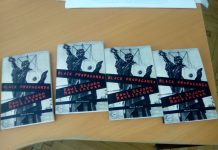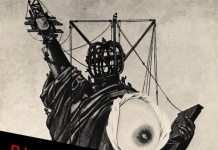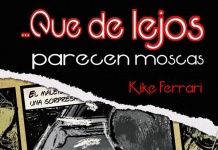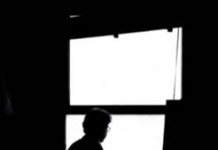 An enterprising independent publisher, Burial Day Books, recently launched a submissions drive for the fourth in an anthology series that draws on the tradition of the Gothic blue book, a form of short-to-medium Gothic and horror story imprint that flourished briefly at the end of the 18th century and into the 19th. According to Burial Day, Gothic blue books were:
An enterprising independent publisher, Burial Day Books, recently launched a submissions drive for the fourth in an anthology series that draws on the tradition of the Gothic blue book, a form of short-to-medium Gothic and horror story imprint that flourished briefly at the end of the 18th century and into the 19th. According to Burial Day, Gothic blue books were:
… abridgements of full-length Gothic novels. The subjects of these books fell into one of two categories; the first being set in a monastery or convent and the second being set in a castle. In terms of the physicality of the book, they were three and a half to four inches in width and six to seven inches in height, with a page count of thirty-six to seventy-two pages. These little pieces of terror were popular at the time because they were affordable, a sixpence or a shilling each. Their cost affordability led them to be nicknamed Shilling Shockers or Sixpenny Shockers.
Clearly designed to cash in on the popularity of the Gothic romances of the period, the Gothic blue books never aspired to much literary excellence, even though some of the best essays in Gothic fiction at the time, especially Charles Robert Maturin’s Melmoth the Wanderer, or some of the work of E.T.A. Hoffmann, could have perfectly fitted the format. But with modern e-publishing and self-publishing suiting shorter formats, and horror and dark fiction going through something of a new bright period, now could be an ideal time to relaunch the format and the working lengths it supported. Monasteries, convents, and castles are unlikely to feel too restrictive for the imagination of the period that’s given us Twilight, after all …

































